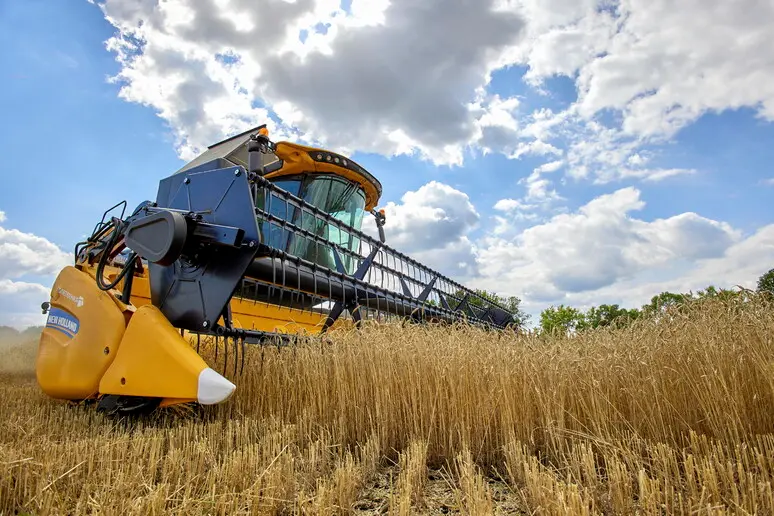Cereal farming in Sardinia, a sector without a safety net: harvests now reduced to a minimum.
Durum wheat remains of excellent quality, but Confagricoltura warns: "Unsustainable prices, unfair competition, and climate change are pushing it toward abandonment."Per restare aggiornato entra nel nostro canale Whatsapp
Sardinia's cereal sector, particularly durum wheat production, is undergoing a transformation that, in terms of numbers, has now assumed the proportions of a structural downsizing.
According to the most recent data, the area dedicated to durum wheat has gone from 97,108 hectares in 2003 to just 28,475 hectares estimated for 2025 .
A 70% decline in just over twenty years, only partially offset by increased yields (from 15 to 27 quintals per hectare). Production remains negative, however: the sector is currently unable to even meet domestic demand.
The causes are multiple but interconnected : changes to the CAP, price volatility, low-cost foreign competition, stagnant infrastructure investments and growing climate impact.
The current configuration of the sector is the result of a progressive loss of economic margins for primary producers.
The average price paid to producers is between 26 and 30 euros per quintal, a level considered unprofitable considering the costs incurred (seeds, processing, fertilization, harvesting). According to operators, this threshold does not guarantee the economic sustainability of businesses, especially those operating outside of supply chain contracts.
The aggravating factor is that this pricing is part of a context dominated by international volatility, often determined by speculative logic .
As highlighted by Confagricoltura, the financialization of the global grain trade (with prices set not at origin but during the voyage of cargo ships) generates a systemic distortion of the market.
The fluctuations experienced by a cargo traveling between North America and a European port are directly reflected in the value chain, further compressing the margin for the local producer.
Sardinian durum wheat boasts high quality characteristics, thanks in part to its low mycotoxin content and decades of varietal selection. However, the lack of an effective strategy for industrial and commercial development of short supply chains prevents these advantages from being fully exploited.
The real risk, as highlighted by several local farmers and analysts, is that quality will remain confined to a dimension unrecognized by the market, unless supported by consistent promotion and contracts that protect value along the supply chain.
Paolo Canargiu, a farmer and livestock breeder from San Gavino Monreale, spoke of a "floating sector that in recent years has steadily declined in a direction that will only lead to the collapse of regional grain production." He raised the issue of promoting local seeds and the "need to invest in supply chain programs that start from the first stage of cultivation: from that Sardinian seed wheat, which still maintains levels of extraordinary excellence and which should be protected and improved through scientific research, so as to ensure that growers have a superior starting point compared to global competitors."
The regional agency Agris Sardegna focuses on scientific research, improving production, adapting to the climate crisis , and analyzing the sector as a whole. Through its researchers, it has also undertaken activities to genetically enhance local wheat varieties and improve cultivation techniques.
"The current trend," observed Marco Dettori, Director of Agris's Field Crop Research Service, "confirms the progressive reduction in cultivated areas and, consequently, production, only partially offset by increased yields. Harvests are therefore unable to even meet domestic demand for durum wheat.
The causes of this condition are linked to several variables: the poor profitability of this crop due to low and volatile grain prices; the rising cost of raw materials (diesel, fertilizers, and herbicides); highly unpredictable weather and climate conditions, undoubtedly linked to climate change, which lead to periods of prolonged drought alternating with often intense rainfall, and an increase in the frequency and duration of heat waves during planting preparations and throughout the crop cycle.
(Unioneonline)
